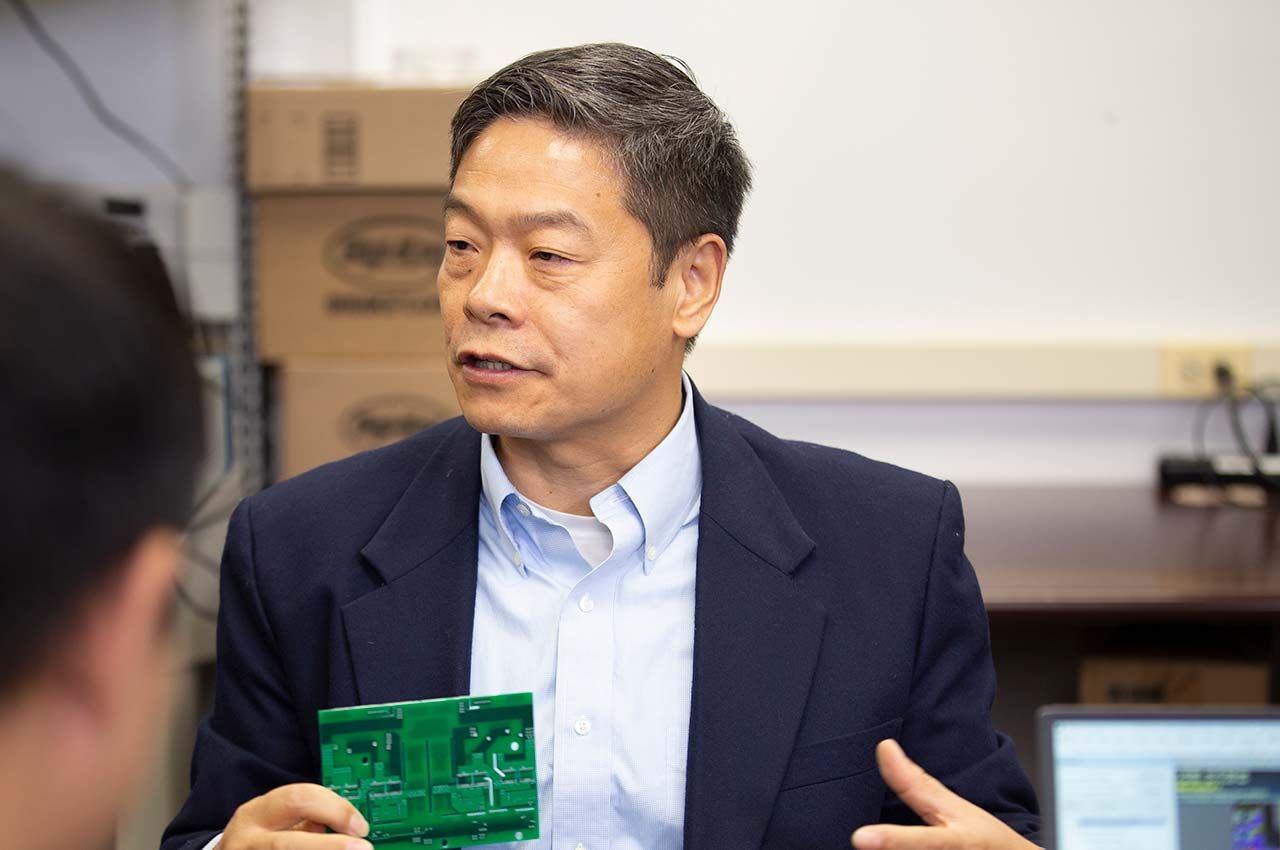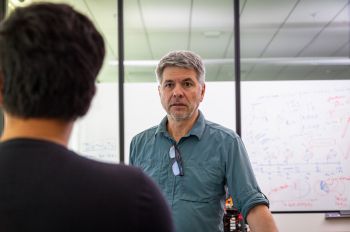John Shen Awarded ARPA-E Grant for Electric Jet Circuit Technology

Illinois Institute of Technology Grainger Professor of Electrical and Computer Engineering John Shen was awarded a $779,000 grant in March 2021 from the United States Department of Energy’s Advanced Research Projects Agency-Energy (ARPA-E) for research developing circuit protection technology for turboelectric aircraft, which require massive power outputs to run.
Turboelectric aircraft are expected to be the new design for commercial aircraft within the next 20 years. Unlike current jets, which burn fuel to power propellers directly, turboelectric aircraft will burn fuel to generate electricity and then use that electricity to power propellers. This extra step turns out to have huge efficiency benefits. By separating the systems, the propellers are no longer tied to the bulky engines and can instead be placed at optimal locations on the jets, for example, on the tips of the wings.
“Jet technology hasn’t changed much in the last 70 years,” says Shen. “But turboelectric aircraft, being propelled by many electric fans distributed across the body of the aircraft instead of just at the wings, represents a fundamental and exciting shift in air travel as we know it, with the potential to reduce air travel emissions by up to 90 percent. This technology will be a critical step to make that a reality.”
Each turboelectric plane will be powered by up to 50 megawatts of electricity, enough to power a small city, so ensuring these planes continue to function safely while in the air will require a completely new kind of circuit protection technology.
Shen’s proprietary superconducting momentary circuit interrupters (SMCI) aim to provide fault protection with ultralow power loss (less than one watt), ultrafast response (less than a ten-millionth of a second), and high power density for future turboelectric aircraft power systems.
“With that much electricity flowing through turboelectric aircraft, it’s crucial to avoid the conduction loss of solid-state circuit breakers that causes excessive heat, and it is vital that we improve on the response time of hybrid circuit breakers to prevent potential damage from the electrical fault,” says Shen. “Using high-temperature superconducting materials for fault protection in this way is a really exciting technological advancement beyond conventional circuit breakers. We are very happy to have an industry partner E2P working with us on superconducting magnetic component manufacturing for this project.”
SMCI is not a circuit breaker but can perform fault interruption and isolation functions, working in concert with the mechanical switch. It offers near-zero conduction power loss, microsecond-time fault interruption, low overcurrent stress, and galvanic isolation, and is lightweight. Shen, who has authored and co-authored more than 300 journal and conference publications and holds 18 issued U.S. patents, and his Illinois Tech team are working on a wide range of power semiconductor device core technologies with emphasis on energy efficiency applications, including smart grids and electricity infrastructures, renewable energy grid integration, high-speed railway transportation, plug-in electric vehicles and charging stations, zero-energy buildings, and circuit protection techniques.
Disclaimer: “Research reported in this publication was supported by the U.S. Department of Energy’s Advanced Research Projects Agency-Energy under Award Number DE-AR0001463. This content is solely the responsibility of the authors and does not necessarily represent the official views of the U.S. Department of Energy.”
John Shen, “Superconducting Momentary Circuit Interrupter: Fault Protection with Ultralow Loss and Ultrafast Response for Future Electric Aviation,” U.S. Department of Energy; Award Number DE-AR0001463
Photo: Grainger Professor of Electrical and Computer Engineering John Shen


![[From left to right] Associate Professor of Biomedical Engineering Kenneth Tichauer and Professor of Electrical and Computer Engineering Jovan Brankov](/sites/default/files/styles/width_350/public/2024-11/tichauer-brankov_1280x850.jpg?itok=hxdjBhlU)

